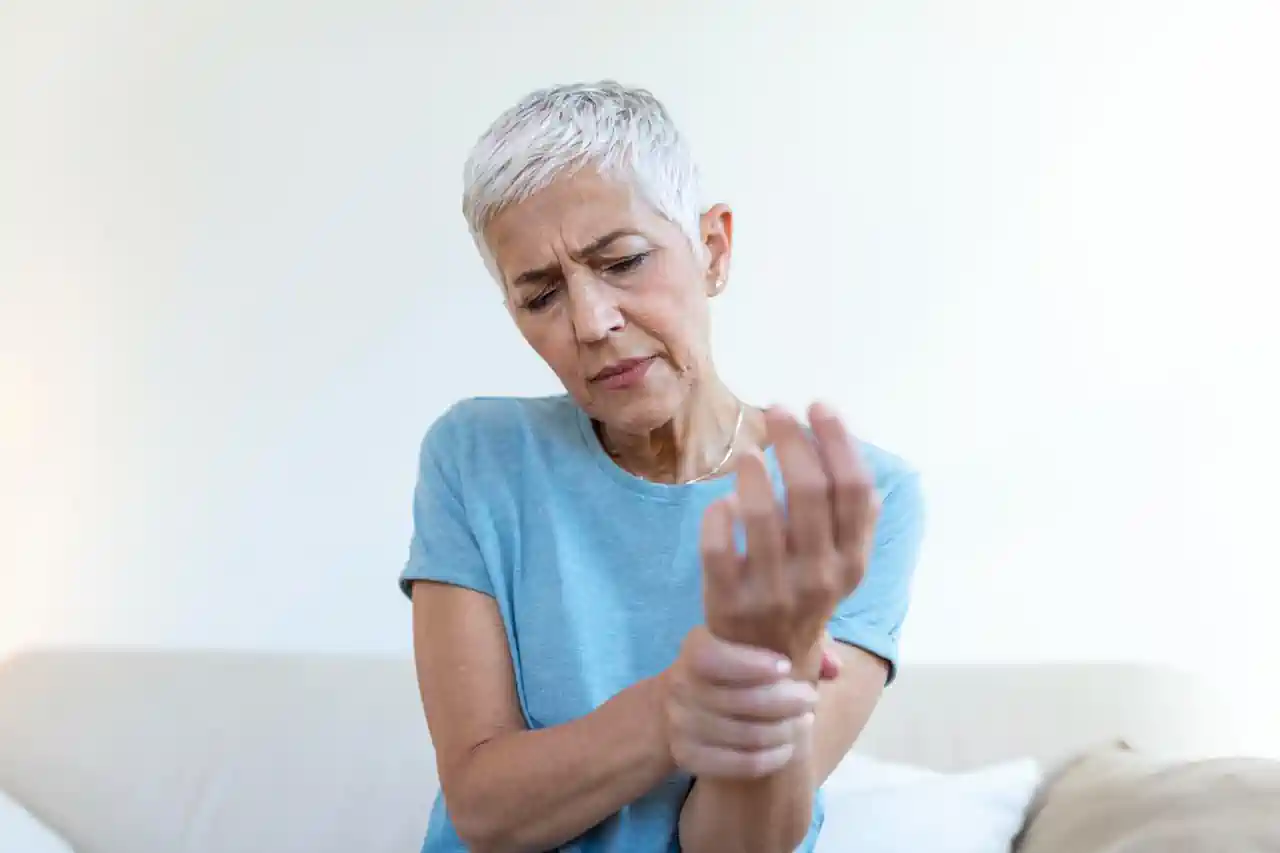Rheumatoid arthritis (RA) is a chronic autoimmune disease that affects millions of people worldwide. While it can target various joints in the body, it often makes its presence known in the hands. In this article, we’ll delve into the intricacies of rheumatoid arthritis in the hands, including its symptoms, causes, and management.
Understanding Rheumatoid Arthritis in Hands
Symptoms of Rheumatoid Arthritis in the Hands
Rheumatoid arthritis (RA) in the hands can cause a range of symptoms that can significantly impact an individual’s daily life. These symptoms often start gradually and worsen over time. Here’s a more detailed look at the common symptoms associated with RA in the hands:
Pain
Pain is one of the hallmark symptoms of RA in the hands. It is often described as a deep, aching pain that can be constant or come and go. The pain is typically more pronounced in the morning or after periods of rest.
Stiffness
Joint stiffness is a classic symptom of RA and can be particularly troublesome in the hands. People with RA often wake up with stiff, inflexible fingers and wrists. This stiffness can last for a significant portion of the day and may improve with movement.
Swelling
Inflamed joints become swollen, leading to a noticeable increase in the size of the affected fingers and wrists. This swelling is due to the accumulation of excess synovial fluid, a result of the immune system’s attack on the synovium.
Decreased Range of Motion
As the disease progresses, individuals may experience a significant decrease in their ability to move their fingers and wrists. This reduced range of motion can make even simple tasks, such as buttoning a shirt or gripping objects, extremely challenging.
Joint Deformities
Over time, the inflammation in the joints can cause structural damage, leading to deformities. The fingers may start to drift away from their normal alignment, a condition known as ulnar deviation. Joint deformities can be permanent and may require surgical correction in severe cases.
Nodules
Some people with RA develop small, firm nodules under the skin, particularly around the affected joints. These nodules can be painful and may limit the range of motion in the hands.
Warmth and Redness
Inflamed joints in the hands can appear warm and red, a visible sign of active inflammation. The warmth is due to increased blood flow to the affected area as a result of the immune system’s response.
Fatigue
Chronic pain and inflammation in the hands can lead to overall fatigue. This fatigue can affect a person’s ability to perform daily tasks and can have a significant impact on their quality of life.
It’s important to note that the severity and combination of these symptoms can vary from person to person. Some individuals may experience mild symptoms that do not greatly interfere with their daily activities, while others may have more severe symptoms that significantly affect their hand function and overall well-being.
Early diagnosis and prompt treatment are essential to help manage these symptoms, prevent joint damage, and improve the quality of life for those with rheumatoid arthritis in their hands. Consulting a healthcare professional and working with a rheumatologist is crucial for an accurate diagnosis and personalized treatment plan.
Management of Rheumatoid Arthritis in the Hands
Managing rheumatoid arthritis (RA) in the hands is essential to alleviate symptoms, prevent joint damage, and improve the quality of life for individuals with this condition. The management of RA typically involves a combination of medical treatment, lifestyle modifications, and supportive therapies. Here is a more detailed look at the management strategies for RA in the hands:
Medications
- Nonsteroidal Anti-Inflammatory Drugs (NSAIDs): NSAIDs like ibuprofen can provide short-term relief from pain and inflammation in the hands. They are available over the counter and can be used as needed.
- Disease-Modifying Antirheumatic Drugs (DMARDs): DMARDs, such as methotrexate and hydroxychloroquine, are prescribed to slow the progression of RA. They work by suppressing the overactive immune response responsible for joint inflammation.
- Biologic Drugs: Biologics like TNF-alpha inhibitors can be prescribed for moderate to severe RA. These drugs specifically target proteins that contribute to inflammation in the joints.
- Corticosteroids: In some cases, corticosteroids may be injected directly into the affected joints to reduce inflammation and pain.
Physical Therapy
- A physical therapist can create a customized exercise program to improve joint flexibility and strength. Range-of-motion exercises, hand and finger exercises, and gentle stretching can help maintain hand function and reduce pain.
Occupational Therapy
- Occupational therapists specialize in helping individuals with RA adapt to their condition. They can recommend assistive devices, ergonomic tools, and techniques for daily tasks to reduce stress on the hands.
Lifestyle Modifications
- Ergonomic Adaptations: Simple changes to your environment, such as using ergonomic keyboards and tools, can make a significant difference in reducing stress on the hands.
- Heat and Cold Therapies: Applying heat packs or cold compresses can help alleviate pain and stiffness in the hands. Some individuals find relief from alternating between hot and cold therapies.
- Assistive Devices: Various assistive devices, such as jar openers, adaptive utensils, and braces, can make daily tasks easier and less painful.
Surgery
- In severe cases where joint damage is extensive and pain is unmanageable, surgical interventions may be considered. These may include joint replacement surgeries, such as wrist or finger joint replacements, to restore function.
Diet and Exercise
- Maintaining a healthy diet and regular exercise can help manage RA symptoms and improve overall health. Adequate nutrition and weight management can reduce the stress on the joints, including the hands.
Stress Management
- Managing stress is crucial for individuals with RA as stress can exacerbate symptoms. Techniques like mindfulness, meditation, and relaxation exercises can be beneficial.
Regular Check-ups
- Regularly seeing a rheumatologist and primary care physician is essential to monitor the progression of RA, adjust treatment plans, and address any emerging issues.
Patient Education
- Learning about the condition and its management is crucial. Patients should be informed about their medications, potential side effects, and the importance of following their treatment plan.
It’s important to note that the management of rheumatoid arthritis in the hands should be tailored to the individual’s specific needs and the severity of their condition. A comprehensive and multidisciplinary approach, involving healthcare professionals, physical and occupational therapists, and the patient, is vital for achieving the best outcomes and maintaining hand function while managing the symptoms of RA.
Rheumatoid arthritis in the hands can be painful and debilitating, but with the right approach, individuals can find relief and maintain their hand function. Early diagnosis and appropriate management are crucial in managing the condition and preventing joint damage.
If you suspect you have rheumatoid arthritis in your hands, consult a healthcare professional for a proper evaluation and personalized treatment plan. By understanding the symptoms, causes, and management options for RA, you can take control of your health and improve your overall well-being.
Sources:
- Arthritis Foundation. (n.d.). Rheumatoid Arthritis. Link
- Mayo Clinic. (2021). Rheumatoid Arthritis. Link
- National Institute of Arthritis and Musculoskeletal and Skin Diseases. (2019). Handout on Health: Rheumatoid Arthritis. Link
- Centers for Disease Control and Prevention. (2021). Rheumatoid Arthritis. Link

